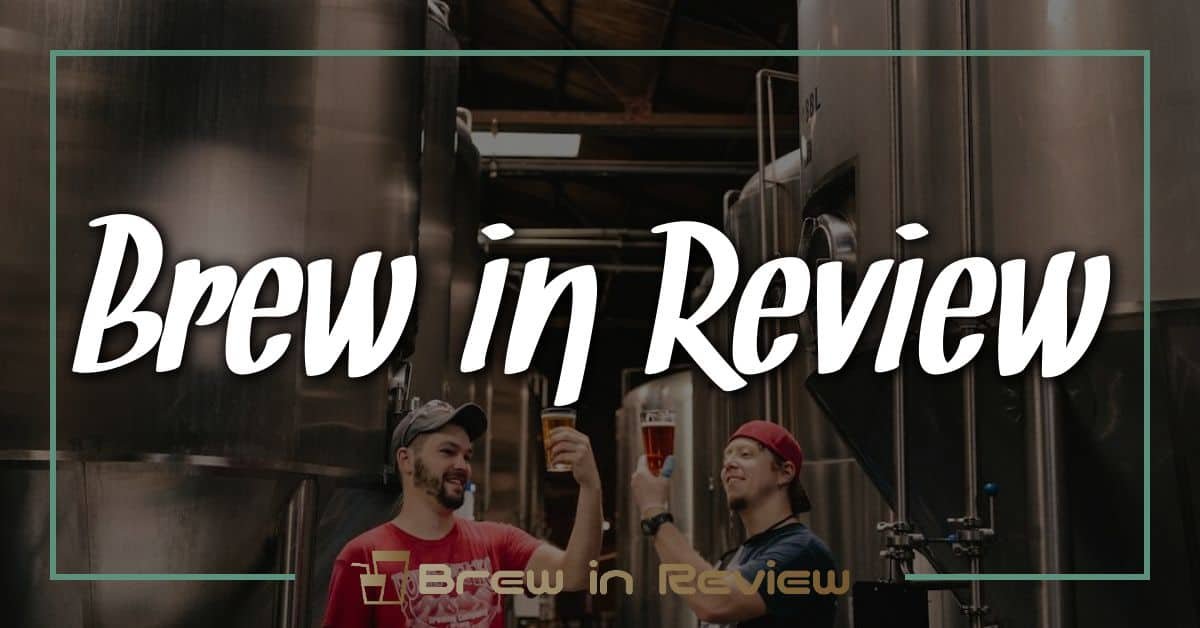When I think of Ireland, I can’t help but picture cozy pubs filled with laughter and the rich aroma of stout wafting through the air. Among the many brews that grace the Emerald Isle, dry stout stands out as a true icon. With its deep, dark color and creamy head, this beloved beer has a unique character that captivates both locals and visitors alike.
Dry stout isn’t just a drink; it’s a symbol of Irish culture and craftsmanship. Its history is steeped in tradition, and every sip tells a story of the land and its people. Join me as we dive into the world of dry stout, exploring its origins, brewing techniques, and the magic that makes it an enduring favorite. Whether you’re a seasoned beer enthusiast or just curious, there’s plenty to discover about this iconic Irish brew.
Overview of Dry Stout
Dry stout represents a unique category of beer characterized by its rich flavors and dark appearance. It boasts a deep ebony color with a creamy, tan head, often enhanced by nitrogen gas, which contributes to its smooth mouthfeel. This style originated in Ireland, and it reflects the country’s brewing traditions and culture.
The brewing process for dry stout typically involves the use of roasted barley, which imparts roasted flavors and hints of coffee and chocolate. I often find that the perfect balance between bitterness and sweetness makes the experience enjoyable. The moderate alcohol content, usually around 4% to 5%, allows for easy drinking and enjoyment in various social settings.

Popular examples of dry stout include Guinness, Murphy’s, and Beamish. Each brand showcases unique characteristics and varying flavor profiles, yet they all stay true to the core elements of this style. When brewing at home, I recommend experimenting with different ratios of roasted malts and hops to fine-tune the taste to your liking.
Dry stout’s significance extends beyond being just a beverage; it embodies Irish heritage and community. It’s more than a drink; it represents gatherings, celebrations, and a shared love for craftsmanship. Whether you’re enjoying a pint in a pub or brewing your own batch, dry stout carries a story and spirit that unites us through the art of brewing.
Historical Background
Dry stout carries a rich history rooted in Ireland, showcasing the craftsmanship and traditions that define its character.
Origins in Ireland
I trace the origins of dry stout back to the early 18th century in Ireland, where local brewers began experimenting with roasted barley. The use of this key ingredient not only gave the beer its signature dark color but also infused it with deep, roasted flavors. Notable records from 1759 indicate Arthur Guinness established his brewery at St. James’s Gate in Dublin, marking a significant moment in dry stout history. By the late 19th century, dry stout gained immense popularity, becoming a staple of Irish taverns and pubs. This beverage became synonymous with Irish culture, representing gatherings and celebrations across the country.
Evolution of Dry Stout
The evolution of dry stout reflects both innovation and tradition within the brewing community. Early on, brewers adopted nitrogen to create a smoother texture, which enhanced the creamy mouthfeel. Over the years, variations emerged, with breweries developing their unique takes while remaining true to the original style. For instance, while Guinness remains the most iconic example, other brands like Murphy’s and Beamish added their distinctive flavors and brewing practices. As home brewers, many of us experiment with dry stout recipes, incorporating different malts and hops to push creative boundaries while honoring the classic foundations laid by Irish brewers long ago. This journey of evolution ensures that dry stout remains relevant and beloved, capturing the essence of Ireland’s brewing heritage.
Characteristics of Dry Stout
Dry stout stands out due to its distinct characteristics, making it a favorite among beer enthusiasts. Its deep color and rich flavors capture the essence of Ireland’s brewing traditions.
Appearance and Aroma
Dry stout showcases a deep ebony color, often described as nearly black, with a creamy, tan head that lingers. The nitrogen infusion creates a velvety mouthfeel, enhancing the visual appeal. Aromas of roasted malt, coffee, and dark chocolate greet the senses, inviting a deeper exploration of its flavors.
Flavor Profile
Dry stout delivers a complex yet balanced flavor experience. The roasted barley contributes rich notes of coffee and chocolate, while the hops provide a subtle bitterness. Sweetness often lingers in the background, balancing the more robust flavors. This interplay creates a smooth finish that leaves drinkers wanting more. Popular examples like Guinness embody these characteristics while offering unique interpretations that showcase the brewer’s artistry.
Notable Dry Stout Brands
As a professional brewer and home brewer, I enjoy sharing insights about the wonderful world of dry stouts. Let’s dive into some notable brands that highlight the essence of this iconic Irish beer style.
Guinness: The Pioneer
Guinness stands as the quintessential example of dry stout, known worldwide. Founded in 1759 by Arthur Guinness in Dublin, this brewery played a pivotal role in popularizing dry stout. The flagship Guinness Draught showcases its signature creamy texture and deep, dark color, complemented by roasted flavors and hints of coffee and chocolate. Nitrogen infusion creates that famous velvety mouthfeel, making it a smooth drinking experience. Each pint represents over 260 years of brewing tradition, blending quality ingredients with innovative techniques.
Other Irish Brews
Several other breweries contribute to the richness of the dry stout landscape in Ireland:
- Murphy’s: Originating from County Cork, Murphy’s Irish Stout delivers a slightly sweeter profile. Its creamy head and flavors of roasted malt and dark chocolate make it an excellent alternative to Guinness.
- Beamish: Another Cork-based contender, Beamish offers a full-bodied stout with robust flavors. The smooth texture and hints of caramel give it unique richness, standing apart from its competitors.
- O’Hara’s: This craft beer from Carlow Brewing Company infuses traditional dry stout with a modern twist. It embraces rich roasted malt flavors, balanced bitterness, and a slightly dry finish, appealing to both traditionalists and newcomers.
- Dingle Brewing Company: Known for its innovative brews, Dingle’s dry stout combines classic techniques with local ingredients. The result is a distinctive flavor profile that captures the spirit of contemporary Irish brewing.
These brands reflect the diversity within the dry stout category, showcasing the unique craftsmanship and flavors that make each one special. Each sip offers a glimpse into the rich brewing heritage of Ireland, inviting anyone interested in brewing or tasting to explore further.
The Cultural Significance of Dry Stout
Dry stout holds a special place not just in Ireland’s bars but also in the hearts of its people. This iconic beer symbolizes Irish heritage and craftsmanship, weaving a rich tapestry of tradition and community. I often share with fellow brewers how integral dry stout is to the Irish identity, linking generations through the simple act of sharing a pint.
The history of dry stout is as dark as its color. With roots tracing back to the early 18th century, it emerged during a time when local brewers experimented with new grains. One cannot overlook Arthur Guinness, who began this legacy in 1759. His decision to create a unique stout forever altered Ireland’s brewing landscape. By the late 1800s, dry stout had cemented its role as the drink of choice for social gatherings, embodying celebrations and camaraderie.
While sipping a glass, one can appreciate not just its flavors but the stories it carries. Each sip encapsulates the spirit of Irish pubs, where the atmosphere thrives on laughter and connection. I find that when I brew my own stout, I’m not just creating a beverage; I’m crafting a piece of history, engaging in a time-honored practice that brings people together.
Notable brands like Guinness and Murphy’s showcase the diverse profiles of dry stout, yet all retain that quintessential Irish essence. I often encourage home brewers to explore these unique flavors. Each brew tells a story of the land and its people, inviting exploration of both traditional and innovative brewing techniques. For anyone keen on brewing, understanding this cultural significance deepens the appreciation of the craft. Whether you’re a novice or a seasoned brewer, brewing a dry stout allows you to connect with Ireland’s rich brewing heritage.
Conclusion
Dry stout truly embodies the heart of Irish culture and tradition. It’s more than just a drink; it’s a connection to the past and a celebration of craftsmanship. Every sip brings a sense of community and shared stories, whether I’m enjoying it in a cozy pub or at home with friends.
I love how this iconic beer invites everyone to explore its rich flavors and history. From the deep ebony color to the creamy texture, dry stout has a way of making each moment special. So whether you’re a seasoned enthusiast or just curious, I encourage you to raise a glass and savor the experience that dry stout offers. Cheers to the journey of discovering this beloved Irish brew!




